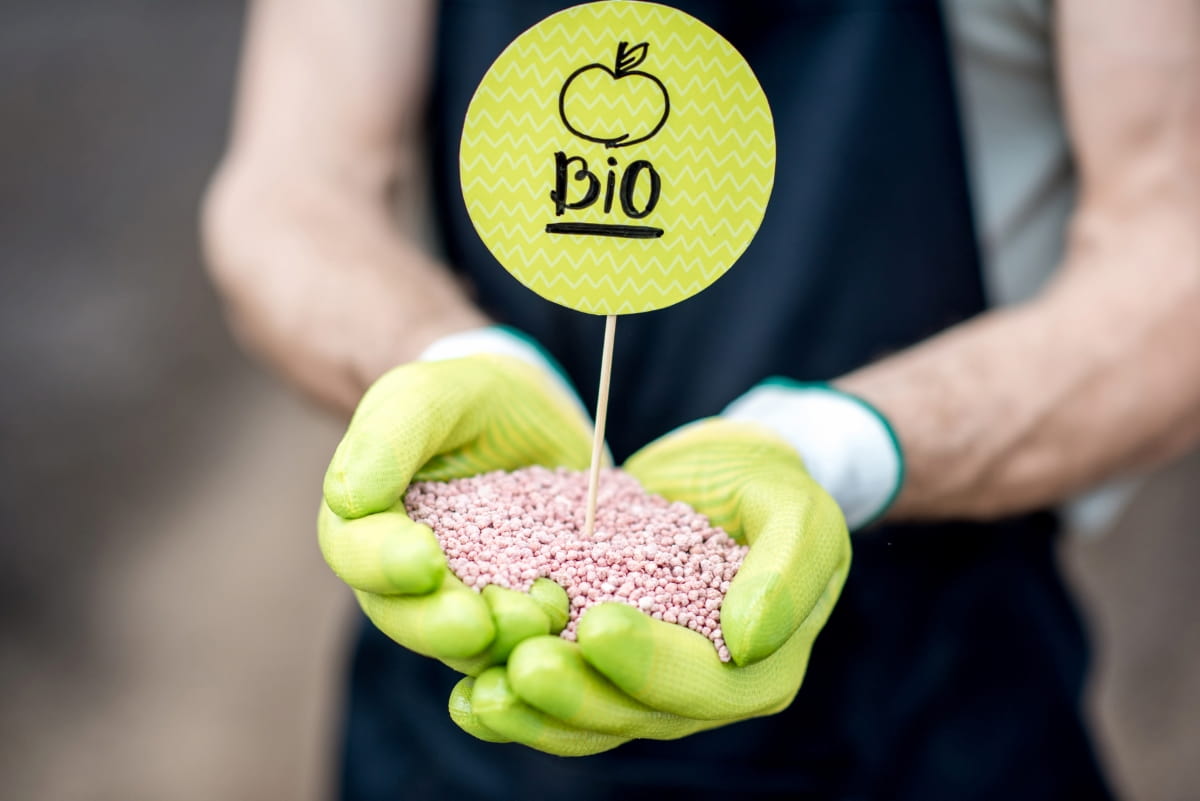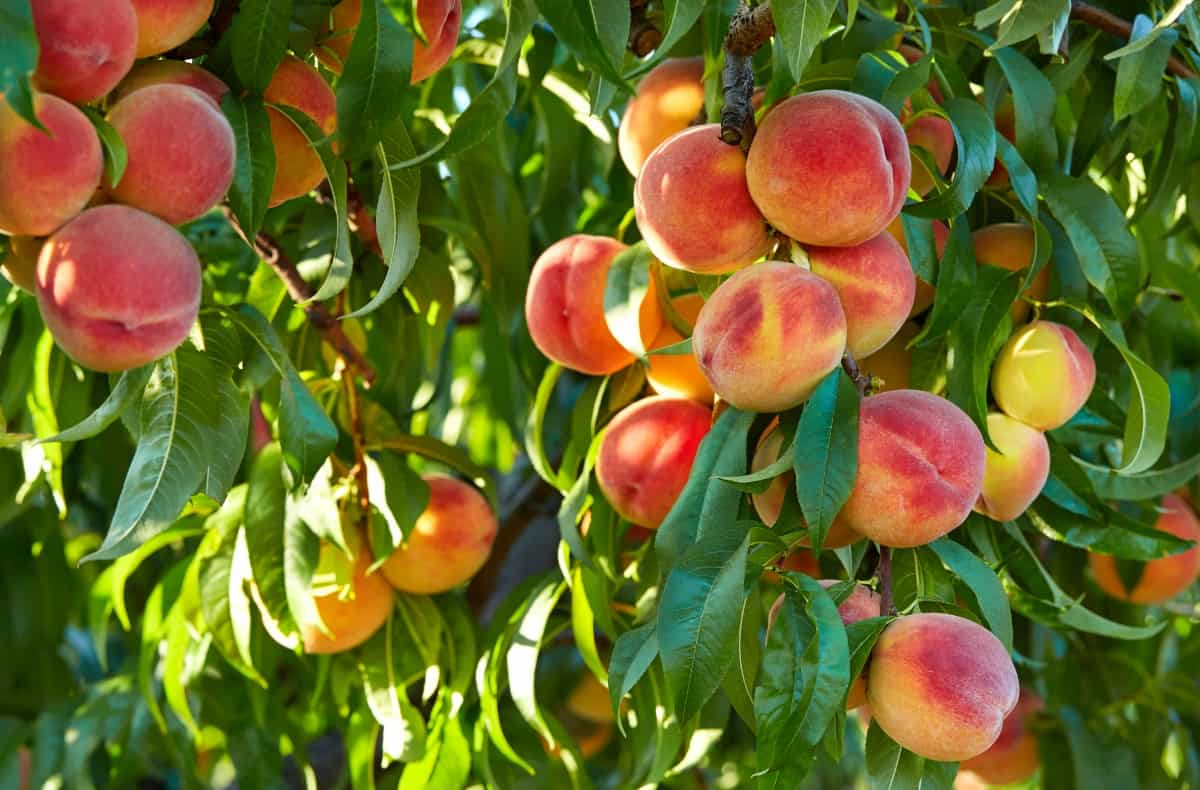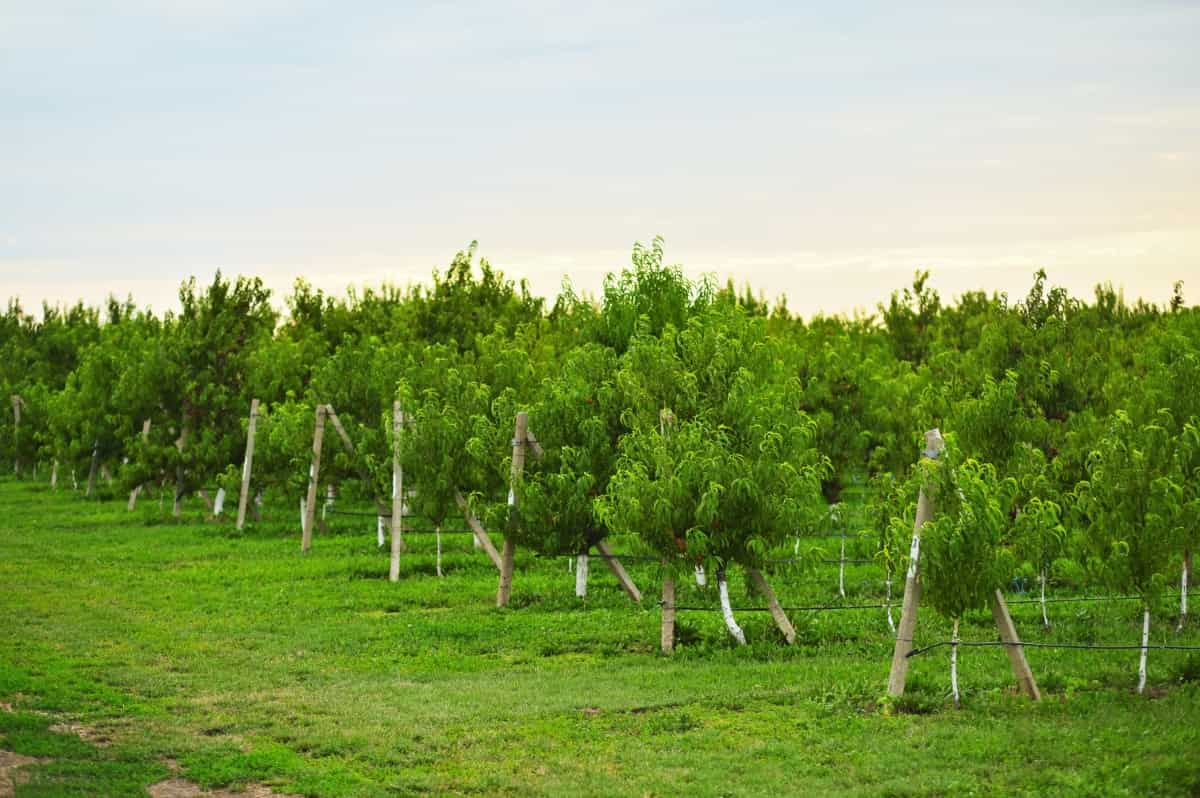Peach trees have specific nutritional requirements to ensure optimal growth and fruit production. They need a balanced supply of macronutrients such as nitrogen, phosphorus, and potassium(N, P, and K) for overall health and development. Nitrogen promotes leaf and stems growth, while phosphorus supports root development and fruit formation. Potassium helps regulate water and nutrient uptake, contributing to disease resistance and fruit quality.

Additionally, peach trees require micronutrients like iron, manganese, and zinc for proper physiological functions. Regular soil testing is essential to determine nutrient deficiencies and adjust fertilizer applications accordingly. Adequate nutrition management is crucial for healthy peach tree growth and abundant fruit yields.
Peach Tree Fertilizer Requirements
Essential Macronutrients for Peach Tree Growth and Development
Nitrogen (N): Nitrogen is a key component of proteins, enzymes, and chlorophyll. It promotes vigorous vegetative growth, enhances leaf and stem development, and increases overall plant productivity.
Phosphorus (P): Phosphorus is vital for plant energy transfer and is involved in processes such as photosynthesis and cell division. It promotes root development, improves fruit quality, and enhances disease resistance in peach trees.
Potassium (K): Potassium is essential for regulating water movement within the plant and maintaining osmotic balance. It enhances fruit development, improves fruit color and flavor, and increases resistance to drought and pests.
Calcium (Ca): Calcium is crucial for cell wall structure and stability. It strengthens the cell walls, reducing the risk of fruit diseases and disorders like blossom end rot.
Magnesium (Mg): It is a component of chlorophyll and plays a vital role in photosynthesis. It is essential for producing energy-rich compounds and promotes plant growth and fruit development.
Sulfur (S): Sulfur is necessary for synthesizing amino acids and proteins. It contributes to peach fruits’ flavor, aroma, and overall quality.
The Role of Micronutrients in Peach Tree Health
- Micronutrients, such as iron, zinc, manganese, and copper, play an important role in many physiological processes within the tree.
- Iron aids in chlorophyll production, ensuring proper photosynthesis and leaf coloration.
- Zinc is essential for enzyme activity and carbohydrate metabolism.
- Manganese is necessary for nitrogen metabolism and the synthesis of certain enzymes.
- Copper contributes to lignin production and disease resistance.
- A deficiency in any of the above-listed micronutrients can lead to leaf discoloration, stunted growth, and decreased fruit production.
- Maintaining adequate levels of micronutrients is essential for peach trees’ overall health and productivity.
Determining the Optimal pH Level for Peach Tree Fertilization
Maintaining the pH level correctly in the soil is crucial for the successful growth of peach trees. The optimal pH range for peach tree fertilization is between 6.5 and 6.8. This slightly acidic environment allows the trees to absorb nutrients efficiently. To know the pH level, a soil test can be conducted using a pH meter or test kit. If the pH level is too high or too low, it can be adjusted by adding soil amendments. Regular monitoring of the pH level is necessary to ensure the proper fertilization of peach trees and promote healthy growth.
In case you missed it: Peach Yields Per Hectare, Harvesting, and Storing of Peaches

Organic Vs. Synthetic Fertilizers: Which is Best for Peach Trees?
Choosing the right fertilizer is essential for the optimal growth of peach trees. When it comes to organic versus synthetic fertilizers, both have their advantages and disadvantages. Organic fertilizers, such as vermicompost or manure, provide slow-release nutrients and improve soil structure.
They are environmentally friendly but may require a longer time to show results. Synthetic fertilizers, on the other hand, offer quick nutrient availability and precise nutrient ratios. However, they may harm beneficial soil organisms and contribute to water pollution if overused. Ultimately, choosing between organic and synthetic fertilizers depends on personal preferences and specific soil conditions.
Timing and Frequency of Fertilizer Application for Peach Trees
Applying fertilizer at the right time and frequency ensures optimal growth and fruit production in peach trees. To determine the ideal timing, consider the tree’s growth stage and the climate conditions. Early spring is the best time to fertilize young trees, just before they begin to grow. On the other hand, established trees benefit from a split application, with one in early spring and the other in late spring or early summer.
The frequency of application depends on the fertilizer formulation and the tree’s needs. While slow-release fertilizers can be applied less frequently, water-soluble fertilizers may need to be applied more frequently. It is important to follow the manufacturer’s instructions and conduct soil tests to determine the peach trees’ nutrient requirements accurately. Peach tree owners can ensure healthy growth and abundant fruit production by timing and frequency.
Selecting the Right Fertilizer Formulation for Peach Trees
The choice of fertilizer formulation is crucial for the health and productivity of peach trees. NPK ratios are important to consider when selecting fertilizers because they indicate the proportion of nitrogen, phosphorus, and potassium in the fertilizer. Peach trees generally require a balanced NPK ratio, such as 10-10-10 or 14-14-14, to ensure optimal growth and fruit production.
In case you missed it: Natural and Organic Ways to Treat Peach Leaf Curl: Fix With Effective Home Remedies

These ratios provide a balanced supply of essential nutrients for the trees, promoting healthy foliage, strong root development, and improved fruit quality. It is recommended to consult with a local horticulturist or agricultural extension service to determine the specific NPK ratio that best suits the soil conditions and nutritional needs of your peach trees.
Common Nutrient Deficiencies in Peach Trees and How to Address Them
- Nitrogen Deficiency: Symptoms include pale green leaves and stunted growth. Apply nitrogen-rich fertilizers or organic matter to the soil.
- Phosphorus Deficiency: Leaves turn dark green and develop purple spots. Use phosphorus-based fertilizers or bone meal to supplement the soil.
- Potassium Deficiency: Leaves exhibit yellowing, curling, and scorched edges. Apply potassium-rich fertilizers or wood ash to replenish the soil.
- Iron Deficiency: Leaves turn yellow between the veins. Treat with iron chelate or apply iron sulfate to the soil.
- Magnesium Deficiency: Leaves exhibit yellowing between the veins, while veins remain green. Apply magnesium sulfate or dolomitic lime to correct the deficiency.
- Zinc Deficiency: Leaves show yellowing between veins and small distorted growth. Use zinc sulfate or zinc chelate to address the deficiency.
- Manganese Deficiency: Leaves display yellowing and brown spots. Apply manganese sulfate or foliar sprays containing manganese to the foliage.
- Calcium Deficiency: New leaves exhibit distorted growth and brown spots. Apply calcium-rich fertilizers or gypsum to the soil.
Environmental Factors Affecting Peach Tree Fertilizer Requirements
Environmental factors greatly influence peach tree fertilizer requirements. Factors such as soil type, pH level, and nutrient availability significantly influence the nutrient needs of peach trees. Sandy soils, for instance, tend to drain quickly and may require more frequent fertilization to ensure nutrient uptake.
On the other hand, clay soils retain water and nutrients better, requiring less frequent fertilization. The pH level of the soil also affects nutrient availability. pH 6.0 to 6.5 is ideal for peach trees, but slightly acidic soils are also tolerated. Additionally, climatic conditions, including temperature, rainfall, and sunlight, impact the growth and nutrient demands of peach trees.
Best Practices for Fertilizing Young and Mature Peach Trees
To ensure the health of young peach trees, it is important to fertilize them with a balanced fertilizer like 10-10-10. The fertilizer should be applied in the early spring and again in the early summer according to the recommended dosage. Early spring is the best time to fertilize mature peach trees before buds break.
In case you missed it: How to Increase Flowers in Peach: Explained in 10 Simple Steps for Higher Yield and Profit

Use a slow-release fertilizer to ensure your plants have a continuous supply of nutrients throughout the growing season. You can determine your peach tree’s specific nutrient requirements through regular soil testing. After fertilization, water the trees thoroughly to facilitate nutrient absorption.
Conclusion
In conclusion, understanding peach tree fertilizer requirements is essential for optimal growth and productivity. By providing the right nutrients in the right quantities, growers can ensure their peach trees receive the necessary nourishment to thrive.
- Feed Your Flock for Less: Top 10 Tips to Save on Chicken Feed
- Ultimate Guide to Ossabaw Island Hog: Breeding, Raising, Diet, and Care
- Hatching Answers: The Top 10 Reasons Your Chickens Aren’t Laying Eggs
- Eggs and Economics: Breaking Down the Cost of Raising Backyard Chickens
- Defend Your Greens: Proven Methods to Keep Iguanas Out of Your Garden
- Ultimate Guide to Cinnamon Queen Chicken: A Comprehensive Guide for Beginners
- Ultimate Guide to California Tan Chicken: Breeding, Raising, Diet, Egg-Production and Care
- Ultimate Guide to Marsh Daisy Chicken: Breeding, Raising, Diet, and Care
- 10 Types of Chicken Farming Businesses You Can Start for Profits